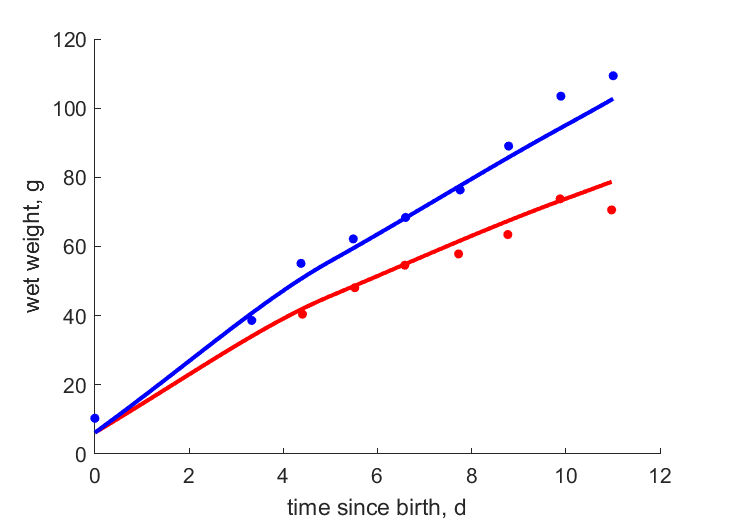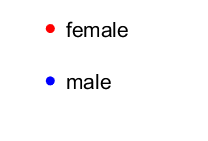Predictions & Data for this entry
| Model: std | climate: A, BW, BS, Cfa, Dfa | migrate: | phylum: |
| COMPLETE = 2.5 | ecozone: THn, TN | food: biHs, biCi | class: |
| MRE = 0.025 | habitat: 0iTd, 0iTa | gender: Dg | order: |
| SMSE = 0.002 | embryo: Tnpf | reprod: O | family: |
Zero-variate data
| Data | Observed | Predicted | (RE) | Unit | Description | Reference |
|---|---|---|---|---|---|---|
| ab | 13 | 13.12 | (0.009421) | d | age at birth | AnAge |
| tx | 11 | 11.01 | (0.0009151) | d | time since birth at fledging | TeatWeat1988 |
| tp | 33 | 33.1 | (0.003067) | d | time since birth at puberty | guess |
| tR | 365 | 365 | ( 0) | d | time since birth at 1st brood | AnAge |
| am | 4562 | 4550 | (0.002649) | d | life span | AnAge |
| Ww0 | 7.8 | 8.239 | (0.05622) | g | initial wet weight | avibase |
| Wwb | 6.21 | 6.132 | (0.01259) | g | wet weight at birth | avibase |
| Wwi | 115.9 | 115.2 | (0.005736) | g | ultimate wet weight | avibase |
| Wwim | 221.5 | 229.5 | (0.03606) | g | ultimate wet weight for males | avibase |
| Ri | 0.01233 | 0.01234 | (0.001237) | #/d | maximum reprod rate | AnAge |
Uni- and bivariate data
| Data | Figure | Independent variable | Dependent variable | (RE) | Reference |
|---|---|---|---|---|---|
| tW_f |   | time since birth | wet weight | (0.05458) | TeatWeat1988 |
| tW_m |   | time since birth | wet weight | (0.05527) | TeatWeat1988 |
Pseudo-data at Tref = 20°C
| Data | Generalised animal | Quiscalus mexicanus | Unit | Description |
|---|---|---|---|---|
| v | 0.02 | 0.04936 | cm/d | energy conductance |
| p_M | 18 | 785.6 | J/d.cm^3 | vol-spec som maint |
| k_J | 0.002 | 0.03207 | 1/d | maturity maint rate coefficient |
| k | 0.3 | 0.2989 | - | maintenance ratio |
| kap | 0.8 | 0.9834 | - | allocation fraction to soma |
| kap_G | 0.8 | 0.8 | - | growth efficiency |
| kap_R | 0.95 | 0.95 | - | reproduction efficiency |
Discussion
- Scaled functional response varies in time
- Males are supposed to differ from females by {p_Am} only
- mod_1: males have equal state variables at b, compared to females
- mod_1: Pseudo-data point k is used, rather than k_J; Data set tp and parameter t_R are added, the latter replacing clutch interval t_N. Postnatal T is based on PrinPres1991, see get_T_Aves. See further the revision page, theme puberty
Bibliography